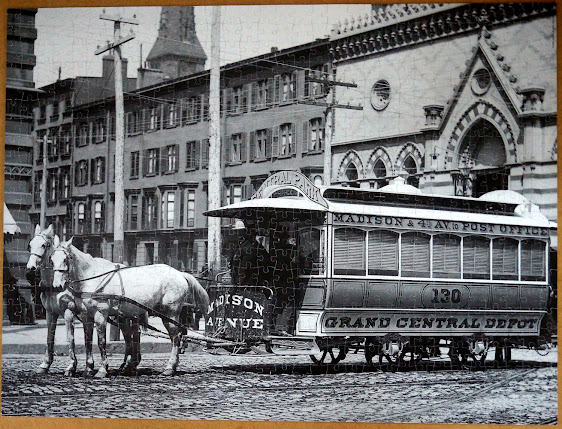700 Pieces
Horse-car on NYC street
MB, 2004
A horse-drawn tram along 23rd Street and 4th Avenue in New York City. Photography by Bettmann / Getty Images
The Streetcar
The streetcar was the first important improvement over the omnibus. The first streetcars were also pulled by horses, but the streetcars rolled along special steel rails that were placed in the middle of the roadway instead of traveling along regular streets. The wheels of the streetcar were also made of steel, carefully manufactured in such a way so they would not roll off the rails. A horse-drawn streetcar was much more comfortable than an omnibus, and a single horse could pull a streetcar that was larger and carried more passengers.
The first streetcar began service in 1832 and ran along Bowery Street in New York. It was owned John Mason, a wealthy banker, and built by John Stephenson, an Irishman. Stephenson's New York company would become the largest and most famous builder of horse-drawn streetcars. New Orleans became the second American city to offer streetcars in 1835.
The typical American streetcar was operated by two crew members. One man, a driver, rode up front. His job was to drive the horse, controlled by a set of reigns. The driver also had a brake handle that he could use to stop the streetcar. When streetcars got bigger, sometimes two and three horses would be used to haul a single car. The second crew member was the conductor, who rode at the back of the car. His job was to help passengers get on and off the streetcar and to collect their fares. He gave the driver a signal when everyone was on board and it was safe to proceed, pulling on a rope that was attached to a bell that the driver could hear at the other end of the car. (SOURCE)

.jpg)


%2Bmini.jpg)
No comments:
Post a Comment